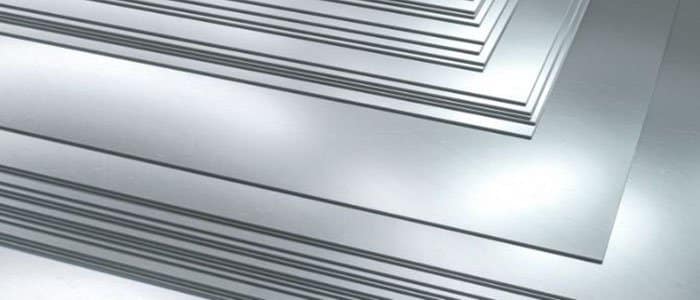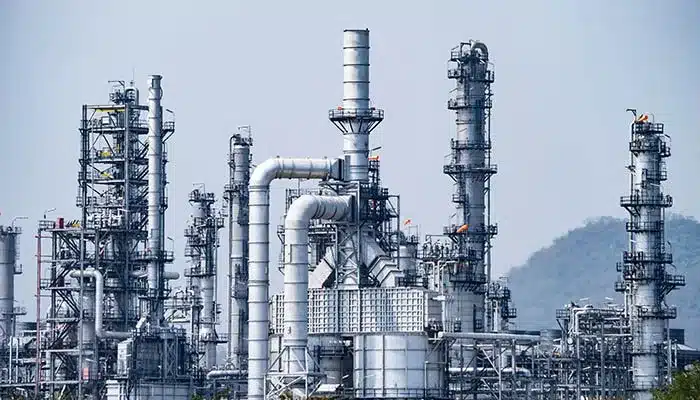Among the many categories of stainless steel, 904L and 316L are undoubtedly the two most popular ones. They each play an important role in different fields, and understanding their characteristics and differences is crucial for the correct material selection. Next, let’s take a deeper look at these two stainless steels.
Basic introduction to the two stainless steels
904 stainless steel
904 stainless steel is a high-alloy austenitic stainless steel, which can be called the pioneer of “super austenitic stainless steel”. It contains a large amount of chromium (Cr), nickel (Ni), and copper (Cu) is specially added. This unique alloy formula gives it strong corrosion resistance and is specially designed to resist highly corrosive environments. In fields such as chemical industry and marine engineering that have extremely high material requirements, 904L has become synonymous with “corrosion resistance king” with its excellent performance.
316 stainless steel
316 stainless steel is a low-carbon version of 316 stainless steel (carbon content ≤ 0.03%), and is one of the most common austenitic stainless steels. It adds 2% – 3% molybdenum (Mo) on the basis of 304. The addition of this element significantly improves its ability to resist pitting and crevice corrosion. Due to its good comprehensive performance and relatively low cost, 316L is widely used in food industry, medical equipment, architectural decoration and other fields that need to take into account corrosion resistance and cost control.
Chemical composition comparison
| Element | 904L Stainless Steel | 316L Stainless Steel |
| Chromium (Cr) | 19.0% – 23.0% | 16.0% – 18.0% |
| Nickel (Ni) | 23.0% – 28.0% | 10.0% – 14.0% |
| Molybdenum (Mo) | 4.0% – 5.0% | 2.0% – 3.0% |
| Copper (Cu) | 1.0% – 2.0% | None |
| Carbon (C) | ≤0.02% | ≤0.03% |
| Manganese (Mn) | ≤2.0% | ≤2.0% |
| Silicon (Si) | ≤1.0% | ≤1.0% |
| Phosphorus (P) | ≤0.045% | ≤0.045% |
| Sulfur (S) | ≤0.035% | ≤0.03% |
Corrosion resistance
Corrosion resistance is an important indicator to measure the performance of stainless steel. 904L stainless steel performs well in various harsh corrosive environments. In a dilute sulfuric acid environment, even if the concentration is less than 5%, 904L stainless steel can be immersed for a long time without corrosion; for industrial-grade phosphoric acid, it can fully tolerate; in seawater, the environment containing chloride ions is a huge challenge for many stainless steels, but 904L stainless steel has extremely strong resistance to pitting and crevice corrosion; in the face of strong oxidizing acids such as nitric acid, although its tolerance is limited, it has performed well compared to some other stainless steels.
316L stainless steel also has good corrosion resistance. In the storage tanks of food processing plants, it can resist the corrosion of various ingredients in food to the tank body; in hospital surgical instruments, it can ensure the hygiene and safety of the instruments; in the decorative strips of building curtain walls, it can resist the influence of the external environment and maintain beauty. However, in a chloride ion environment, the pitting resistance equivalent (PREN) of 904L stainless steel is as high as 35 +, while 316L stainless steel is only about 25. This means that in the same chloride ion environment, 904L is less prone to pitting, and its corrosion resistance life may be several times that of 316L stainless steel. For example, in the pipeline system of offshore oil and gas platforms, 904L stainless steel can better resist the erosion of seawater and reduce the frequency of maintenance and replacement; while 316L stainless steel may require more frequent inspection and maintenance.
Mechanical properties
In terms of mechanical properties, 904L stainless steel and 316L stainless steel also have their own characteristics. The strength of the two is relatively close, but 904L stainless steel has better low-temperature toughness due to its high nickel content, which can be as low as – 196°C. This gives it an advantage in some areas with high requirements for low-temperature performance. For example, 904L stainless steel is used in chemical equipment in cold areas without worrying about the material becoming brittle at low temperatures and affecting performance.
316L stainless steel has a slightly higher elongation and is more suitable for parts that require complex forming. For example, when manufacturing deep-drawn containers, 316L stainless steel can be more easily processed into the required shape to meet the design requirements of the product. This characteristic makes 316L stainless steel widely used in some industrial products with more complex shape requirements.
Processing and welding
Processing and welding are important links in the application process of stainless steel. Both 904L stainless steel and 316L stainless steel face some challenges in this regard. The high alloy content makes them easy to harden during processing, and the cutting speed needs to be reduced. At the same time, heat input needs to be controlled during welding to avoid intergranular corrosion.
The processing cost of 904L stainless steel is about 40% higher than that of 316L stainless steel, mainly because its tool wears faster. After welding, although heat treatment is usually not required, matching welding materials such as ERNiCrMo-3 must be used to ensure welding quality. This increases the difficulty and cost of processing for some occasions with high requirements for welding technology.
316L stainless steel has obvious advantages in processing. It has high processing efficiency and is suitable for large-scale production. Moreover, its welding process is mature and the cost is only 1/3 of 904L stainless steel. This makes 316L the preferred material in some projects that are more cost-sensitive and have large production scales.
Cost and economy
Cost is a factor that must be considered when selecting materials. From the perspective of raw material cost, the price of 904L stainless steel is relatively high, about 3-5 times that of 316L stainless steel. This is mainly due to its high alloy content and complex smelting process. In terms of processing cost, 904L stainless steel is also much higher than 316L stainless steel due to its difficulty in processing.
However, from the perspective of maintenance cost and applicable scenarios, the situation is different. 904L stainless steel has an ultra-long service life in a highly corrosive environment and its maintenance cost is extremely low. In some fields where the equipment life is required to exceed 10 years and the medium is highly corrosive, such as chemical industry and ocean, although the initial investment of 904L stainless steel is large, it may be lower in terms of the full life cycle cost. 316L stainless steel is suitable for projects with limited budgets or mild environments, such as food and construction, due to its low cost. In these fields, 316L stainless steel can meet basic corrosion resistance requirements at a low cost. Although regular inspection and maintenance may be required, the overall cost is still controllable.
Final Selection Guide
Choose 904L stainless steel: the medium is highly corrosive, such as strong acid and high-concentration chloride environment; the equipment needs to work in a low temperature environment and has high requirements for toughness; the project has high requirements for service life and can accept a higher initial cost. For example, in sulfuric acid storage tanks in chemical plants, pipeline systems on offshore oil and gas platforms, phosphoric acid production equipment and other scenarios, 904L stainless steel can play its excellent corrosion resistance and ensure the long-term stable operation of the equipment.
Choose 316L stainless steel: The budget is limited and the cost needs to be controlled while meeting the basic corrosion resistance requirements; the application environment is relatively mild, such as food processing, medical equipment, architectural decoration and other fields; there are high requirements for processing efficiency and simplicity of welding process. In these scenarios, 316L has become an economical and practical choice with its good comprehensive performance and low cost.
__________________________________________________________________________________________________
Daxun Alloy Co., Ltd. is a professional stainless steel supplier. If your project requires it, please contact us immediately and we will give you the best solution and product price.




